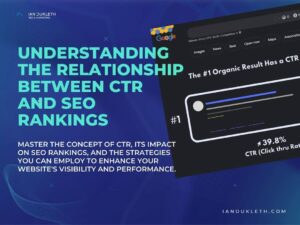Leveraging Anchor Text for On-Page SEO: Best Practices and Pitfalls
Anchor text is a small but critical factor in your on-page SEO strategy. Whether you are a business owner managing your website’s SEO or an SEO enthusiast looking to improve your on-page strategies, understanding and effectively using anchor text can lead to significant improvements in your site’s performance.
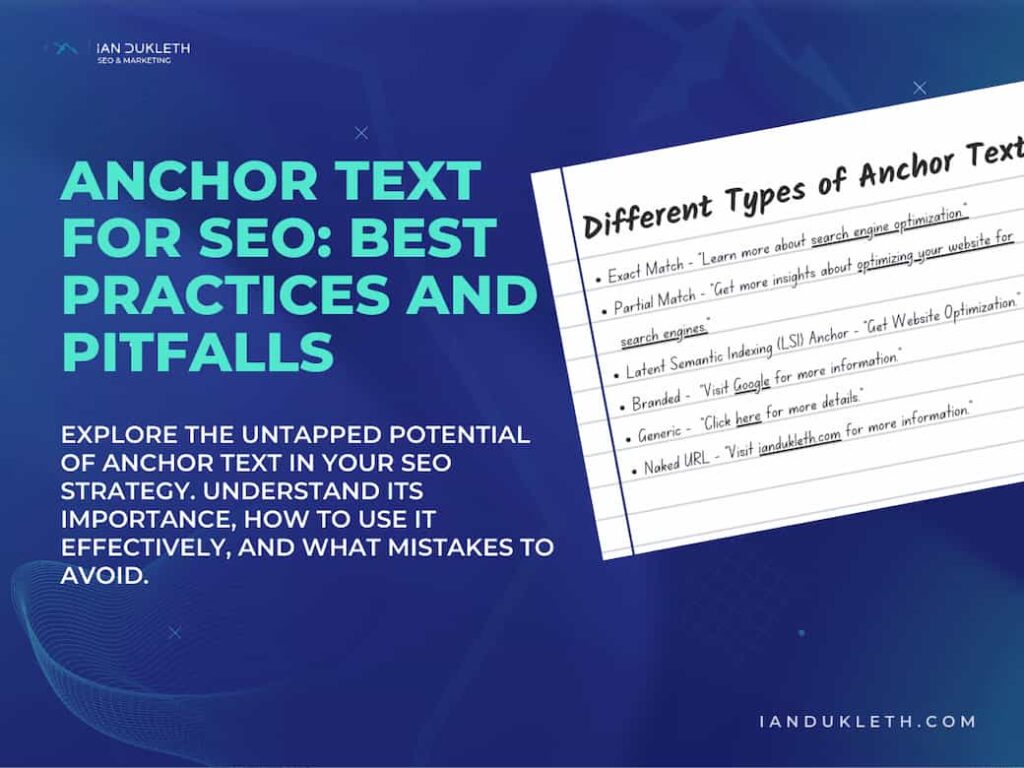
Understanding Anchor Text
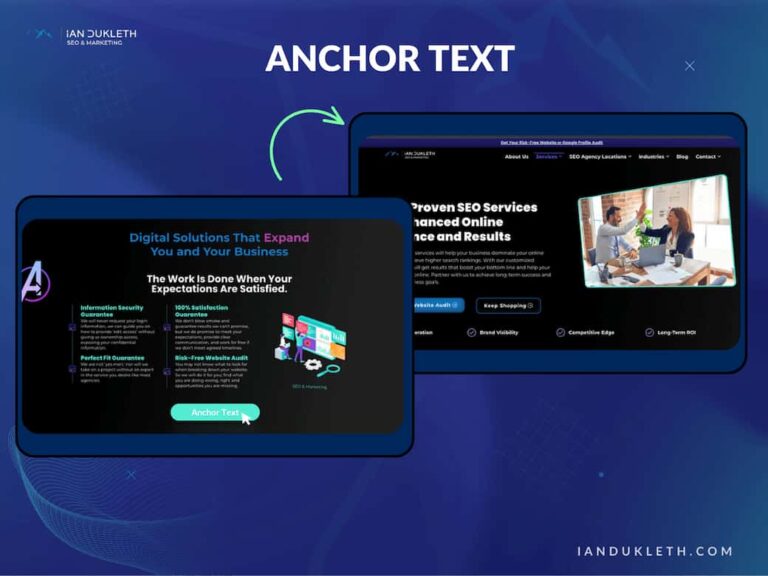
What Is Anchor Text?
Simply put, anchor text is the ‘clickable text’ in a hyperlink. When you click on anchor text, it redirects you to another location, either within the same website (internal link) or to a different website (external link) [or outlinks in Screaming Frog]. For instance, in the link:
“Check out our [SEO services](https://www.iandukleth.com/services/seo)”,
“SEO services” is the anchor text.
Different types of anchor texts include:
- Exact Match: The anchor text is the exact keyword it’s trying to rank for.
- Partial Match: The anchor text includes a variation of the keyword.
- Branded: The anchor text uses the brand name.
- Generic: The anchor text uses a generic term, often used for calls-to-action.
- Naked URL: The anchor text uses the URL as the text.
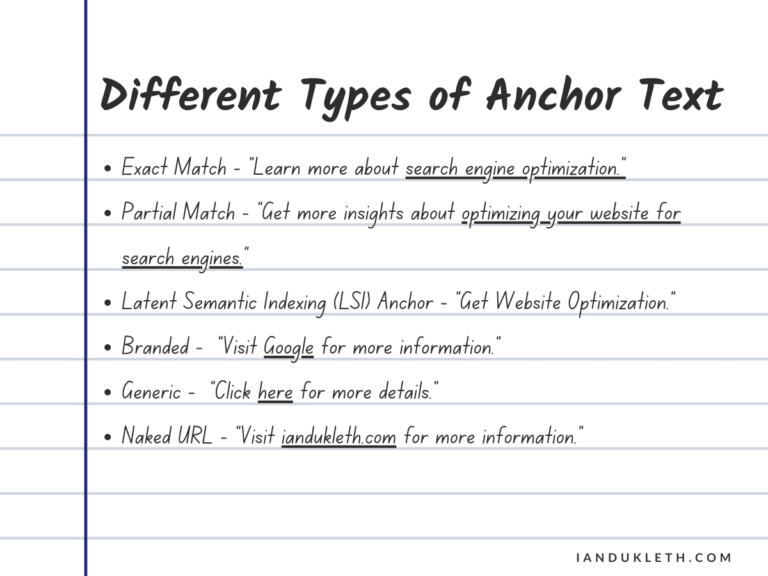
What is The Role of Anchor Text in On-Page SEO?
Anchor text plays a crucial role in SEO as it provides context about the linked content. Search engines like Google use this context to understand the content of the linked page. For instance, using the anchor text “SEO services” signals to Google that the linked page is about SEO services.
Anchor text can directly impact your webpage’s relevance and authority. However, it is essential to be cautious of ‘black-hat‘ anchor text strategies, such as keyword stuffing and irrelevant linking, which can lead to penalties from search engines.
Anchor Text Best Practices
Here are some best practices to consider when using anchor text:
- Use relevant and descriptive text.
- Vary your anchor text types.
- Include keywords naturally.
- Ensure that your links add value to the content.
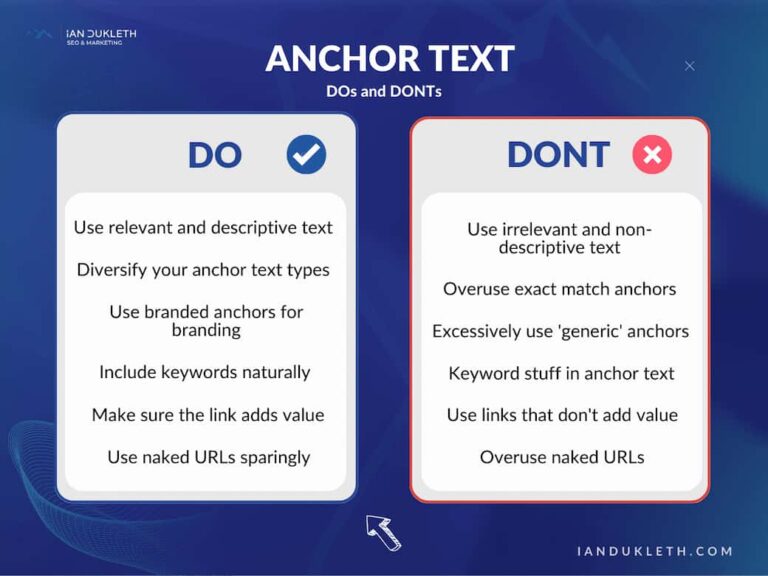
Common Pitfalls in Using Anchor Text for SEO
When using anchor text for SEO, avoid these common pitfalls:
- Irrelevant and Non-Descriptive Text: Anchor text should give users and search engines a clear idea of the linked page’s content.
- Overuse of Exact Match Anchors: While exact match anchors can be beneficial, overuse can appear spammy to search engines.
- Excessive Use of Generic Anchors: Phrases like “click here” offer very little SEO value and context for your readers.
Deeper into ‘black-hat’ anchor text strategies, these could include hidden links, links from non-relevant websites, and over-optimized anchor text. These practices can negatively impact your website’s performance and lead to penalties from search engines.
Tips for Optimizing Your On-Page Anchor Text for SEO
Tip #1 – Ensuring Relevance and Context
Ensure your anchor text is relevant to the linked content and provides a clear context.
Tip #2 – Varying Anchor Text Types
Use a variety of anchor text types to maintain a natural and balanced link profile.
Tip #3 – Avoiding Over-Optimization
Avoid over-optimization. Too many keywords or overly commercial anchor text can signal manipulation to search engines.
Tip #4 – Leveraging Branded Anchor Text
Utilize branded anchor text for a natural linking strategy that also boosts brand recognition.
Tip #5 – Using Long-Tail Anchors
Consider using long-tail anchors for more descriptive linking that can capture a wider range of search queries.
What Google Has to Say about Anchor Text
Google emphasizes that anchor text should “give users and Google an idea of what the page you’re linking to is about”. This echoes our advice: ensure your anchor text is relevant, descriptive, and beneficial to the user.
Internal links: cross-reference your own content You may usually think about linking in terms of pointing to external websites, but paying more attention to the anchor text used for internal links can help both people and Google make sense of your site more easily and find other pages on your site. Every page you care about should have a link from at least one other page on your site. Think about what other resources on your site could help your readers understand a given page on your site, and link to those pages in context.
Anchor Text Frequently Asked Questions
How Do You Optimize an Anchor Text?
Optimizing anchor text involves several practices. These include ensuring the anchor text is relevant to the linked content, using a variety of anchor text types to avoid over-optimization, including keywords naturally and contextually in the anchor text, and avoiding the use of generic phrases like “click here” that do not provide much context.
Why is Anchor Text Important for SEO?
Anchor text is crucial for SEO because it provides context about the linked content to search engines. When search engines understand the content of the linked page, it can rank the page accurately for relevant queries. Furthermore, using a variety of anchor text types helps build a natural and diverse internal linking / anchor text profile, which is favored by search engines.
How Many Anchor Texts Should I Include in a Single Page?
There’s no hard and fast rule for the number of anchor texts to include on a single page. The primary guideline is that every anchor text should add value to the user. Each should be contextually relevant and lead to content that furthers the user’s understanding of the topic at hand. Overstuffing a page with anchor texts, especially if they don’t provide additional value, can lead to a poor user experience and potential SEO penalties.
How Does Internal Linking Strategy Affect My Website's SEO?
An effective internal linking strategy plays a significant role in SEO. It helps search engines understand the structure and hierarchy of your website, leading to more accurate indexing. By using descriptive anchor text in your internal links, you guide search engine crawlers and help them understand the context of your site’s content. Additionally, internal linking aids in distributing page authority (page rank) throughout your site, which can improve the ranking of individual pages. Lastly, a thoughtful internal linking structure enhances user navigation, leading to improved user engagement and potential SEO benefits.

